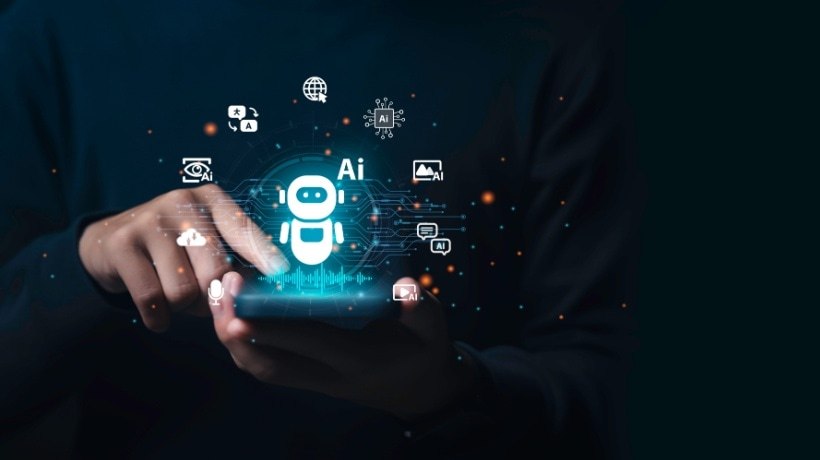The Future Of Corporate Training Will Be Automated
Imagine if every employee in your organization had their own personal learning assistant—one that sends tailored training modules, nudges them at just the right time, resolves their doubts, tracks their progress, and even reminds their manager if they're falling behind. Now imagine that assistant working 24/7 without burnout, never missing a follow-up, and continuously improving based on data.
Welcome to the era of agentic AI in Learning and Development (L&D)— where training is no longer administered, it's automated, personalized, and self-driven. Unlike traditional AI tools that merely recommend courses, agentic AI acts. It makes decisions, executes tasks, and collaborates with people like a digital L&D team member. In many ways, it's not just a feature—it's your newest hire.
From Tools To Teammates: What Makes Agentic AI Different?
Most organizations already use AI in learning—maybe in chatbots, content suggestions, or auto-graded quizzes. But that's assistive AI, not agentic AI. The real shift from traditional AI to agentic AI lies in how it behaves. Older, assistive AI tools were mostly passive—they waited for a user to act first. Their job was to suggest what someone could do next. For example, an LMS might say, "Here's a recommended course." That's helpful, but limited.
Agentic AI, on the other hand, doesn't just suggest—it takes action. It behaves less like a tool and more like a digital co-worker. Instead of simply reacting to inputs, it proactively drives outcomes. It doesn't wait for an employee to search for a course; it assigns it automatically, sends reminders, tracks progress, and even escalates if needed. In short, while assistive AI is user-driven, agentic AI is goal-driven—it owns the responsibility of getting things done: "I enrolled you because your role requires this, and I'll check back in three days."
Agentic AI behaves more like an employee than a software feature. It doesn't wait for instructions—it identifies learning gaps, plans interventions, nudges learners, tracks progress, escalates delays, and optimizes delivery automatically.
What Can An AI Training Agent Actually Do?
Let's paint a picture. If agentic AI joined your L&D team tomorrow, here's what it would handle:
Enrollment Management
Automatically assigns courses based on role, performance, or compliance needs.
Personalized Learning Plans
Adjusts difficulty, format, and pacing per learner.
Automated Follow-Ups And Nudges
Sends reminders before deadlines, and escalates to managers when needed.
Live Performance Coaching
Monitors workflow tools (like CRM or project apps) and gives real-time feedback based on behavior.
Microlearning Delivery
Breaks long modules into daily snackable bites—sent via Teams, WhatsApp, or Slack.
Assessment And Certification Tracking
Grades tests, issues digital badges, and updates central dashboards without anyone lifting a finger.
Analytics And Reporting For HR
Sends weekly "State of Learning" summaries—highlighting who's excelling and who's slipping.
Sounds like the responsibilities of at least three human training coordinators, doesn't it?
Why L&D Teams Are Ready for AI Training Agents
Most L&D departments are understaffed but over-expectationed. They're:
- Running 20+ recurring training tracks.
- Chasing employees for completion.
- Updating content while also building reports.
- Trying to personalize learning—but at scale; personalization means chaos.
Agentic AI flips the model. Instead of L&D pushing content, training agents pull learners through journeys automatically. Instead of tracking progress manually, AI agents monitor engagement continuously. Instead of waiting for end-of-month reports, leaders get real-time learning intelligence.
But Isn't AI Replacing The Trainer?
Not at all. It's replacing L&D admin work, not L&D strategy. Here's how roles shift:
- L&D manager
- Learning strategist and program designer
- Training coordinator
- AI workflow orchestrator
- Instructional Designer
- AI content curator
- HRBP
- Skill intelligence analyst
Instead of juggling spreadsheets, emails, and follow-ups, L&D teams finally get to do what humans do best:
- Designing impactful learning experiences
- Talking to employees to understand real skills gaps
- Building culture, not just compliance
Agentic AI doesn't replace people—it elevates them.
How No-Code Opens The Door To AI-Led Training (Without Waiting For IT)
Here's a big myth: "To build AI applications, you need developers." Not anymore. Modern no-code platforms now offer pre-built AI agent templates—meaning L&D teams can create their own digital training agents without writing a single line of code. Want an agent that:
- Sends onboarding lessons over WhatsApp?
- Auto-generates quizzes from your existing PDFs?
- Assigns leadership content when someone gets promoted?
You can build all that with drag-and-drop workflows. Zero IT dependency. Zero backlog delays. Full creative control for L&D. This is how citizen development enters L&D—HR and trainers are becoming AI builders, not just content creators.
Real-World Use Cases Already Happening
Here's how early adopters are using agentic AI training specialists:
Case 1: "Compliance Guardian" Agent At A Finance Firm
- Auto-enrolls employees based on region and role
- Tracks module completion
- Escalates overdue courses to reporting managers
- Auto-generates completion certificates
- Result
80% reduction in manual follow-ups.
Case 2: "Sales Readiness Coach" Agent At A SaaS Company
- Monitors CRM data
- If deals stall, assigns negotiation microlearning
- After one week, checks if conversion improved
- Result
15% uplift in deal velocity.
Case 3: "First 30 Days Buddy" Agent For New Hires
- Sends tool tutorials in digestible daily chunks
- Answers FAQs through AI chat
- Introduces them to key team members automatically
- Result
50% faster onboarding ramp-up time.
What Will An AI-Powered L&D System Look Like In 2026?
Let's predict:
- Every employee will have a personal AI learning buddy.
- Trainings will be adaptive, not linear.
- Feedback loops will be instant, not periodic.
- LMS will evolve into learning command centers powered by agents.
- L&D teams will design strategy, not operate workflows.
- No-code will make every HR manager an AI orchestrator.
In short—training won't feel like training anymore. It will feel like real-time support, personalized growth, and intelligent coaching—seamlessly woven into the flow of work.
Final Thought: The Best Time To Hire An AI Training Agent Was Yesterday
The second-best time? Right now. If L&D remains manual, it will always lag behind the pace of business transformation. AI isn't just an efficiency tool—it's a force multiplier for human potential.
Your next trainer might not walk into the office. They might boot up from the cloud. And when they do, they'll be the most consistent, proactive, data-smart team member you've ever onboarded. So the question isn't: Can agentic AI act as a training specialist? It's: Are you ready to let it?








